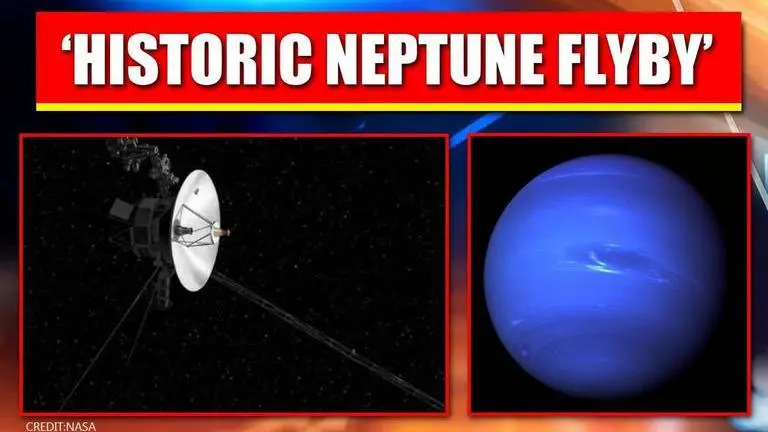Updated 11 August 2020 at 15:39 IST
NASA's Voyager 2 became first spacecraft to observe Neptune on this day in 1989
NASA's Voyager 2 was the second spacecraft to be launched into space after Voyager 1 designed to study Jupiter, Saturn, Uranus, and Neptune.
- Science News
- 2 min read

On August 11, 1989, NASA’s Voyager spacecraft was launched from the Cape Canaveral Air Force Station in Florida for its historic Neptune flyby to confirm the scientific data from ground-based observations in a first-ever close-up with the solar system’s eighth planet. NASA's Voyager 2 discovered a gigantic cloud of debris, suspected to be remnants of the destroyed moons and one of two new ring arcs, or partial rings outside the orbit of the Neptunian moon 1989N4, according to a release by NASA’s Jet propulsion Laboratory’s.
Voyager's narrow-angle camera captured glares of an overexposed Neptune to the right of the moon and ring arc and its stars. NASA's Voyager 2 was the second spacecraft to be launched into space after Voyager 1 designed to study Jupiter, Saturn, Uranus, and Neptune. However, it became the first human-made object to fly by Neptune. Voyager 2 discovered five moons, four rings, and a "Great Dark Spot,” on the blue planet as a part of the “Grand Tour”. The spacecraft was equipped by NASA with a slow-scan coloured TV camera to capture the images of the planets in a close-up. Voyager-2 also carried an extensive suite of instruments to record magnetic, atmospheric, lunar, and other data about the planetary systems.
[Model of NASA's twin Voyager spacecraft. Credit: NASA]
[Neptune's moon Triton. Credit: NASA]
Advertisement
Advertisement
Capped 7 billion-kilometer journey
According to NASA, Voyager 2’s encounter with Neptune capped a 4.3 billion-mile (7 billion-kilometer) journey. “It flew about 2,980 miles (4,800 kilometers) over the cloud tops of the giant planet, the closest of its four flybys. It was the first human-made object to fly by the planet. Its 10 instruments were still in working order at the time,” NASA explained. The spacecraft is known to have discovered six new moons (Proteus, Larissa, Despina, Galatea, Thalassa, and Naiad) and four new rings. Further, it found that the Hydrogen was the most common atmospheric element of Neptune, although the abundant methane gave the planet its blue appearance. Voyager two captured iconic images of three major planetary features—the Lesser Dark Spot, the Great Dark Spot, and Scooter. Voyager data complements other planetary missions of NASA including NASA's Interstellar Boundary Explorer (IBEX), Interstellar Mapping and Acceleration Probe (IMAP), due to launch in 2024.
[When Voyager 2 reached Neptune, the Voyager mission team had completed five planetary encounters. Credit: NASA]
[Neptune's rings discovered by Voyager-2. Credit: NASA]
Published By : Zaini Majeed
Published On: 11 August 2020 at 15:40 IST




